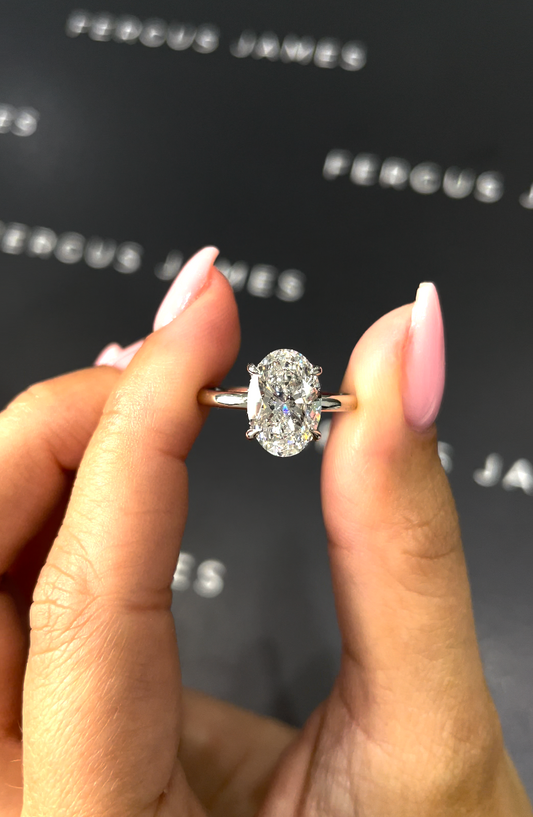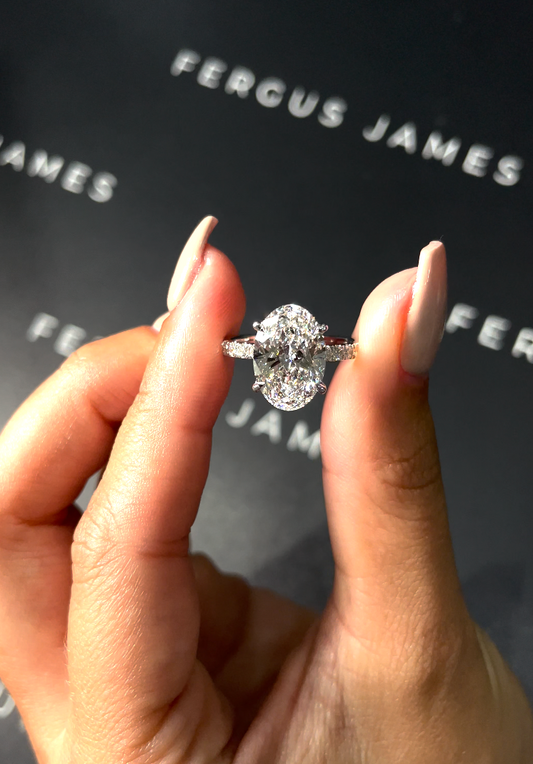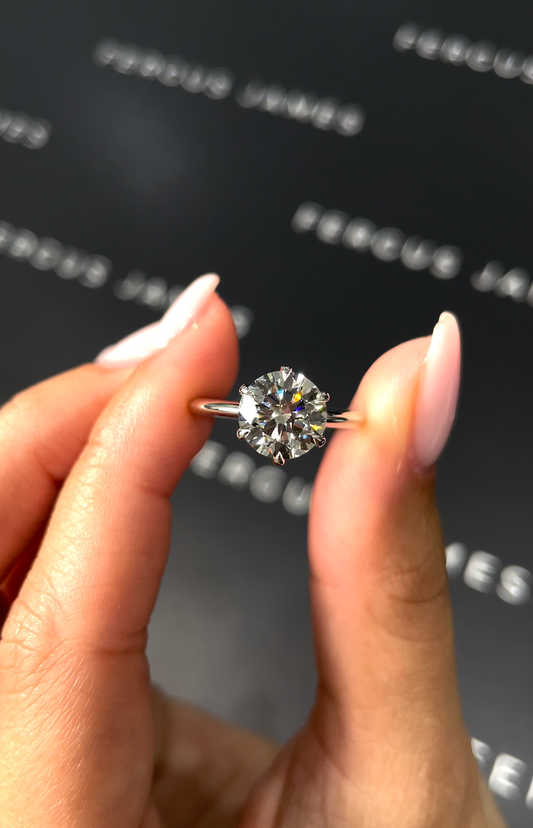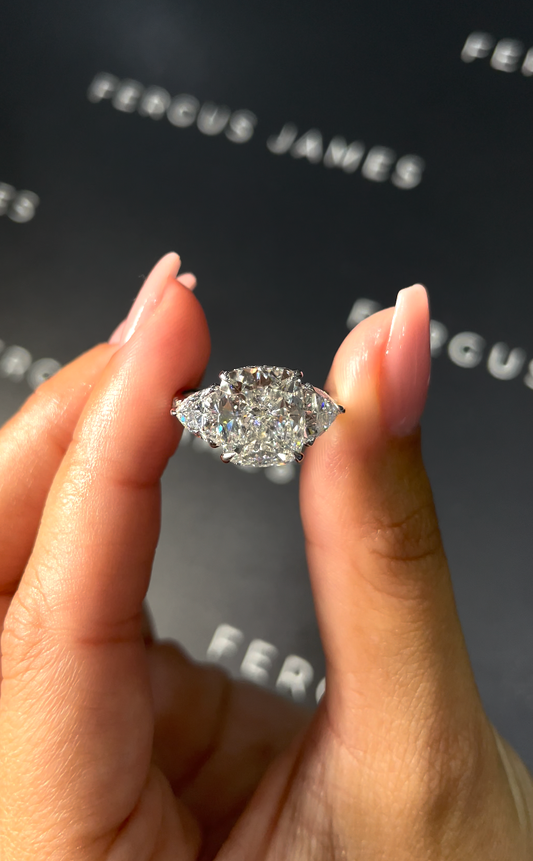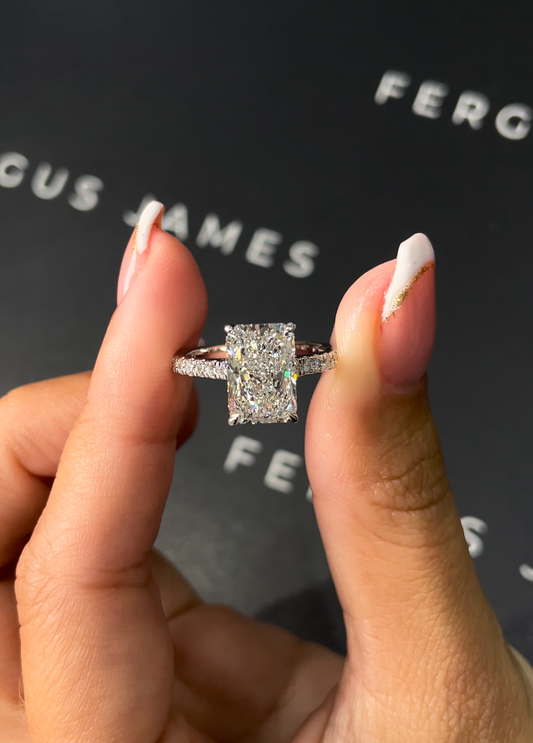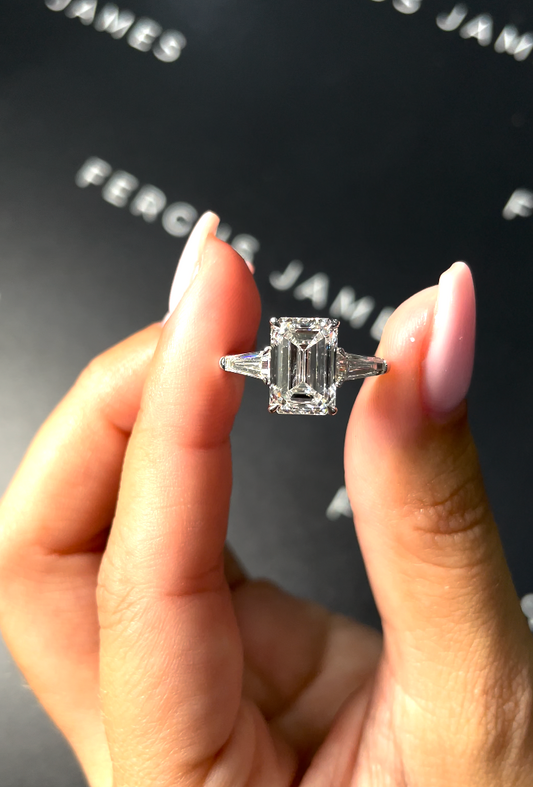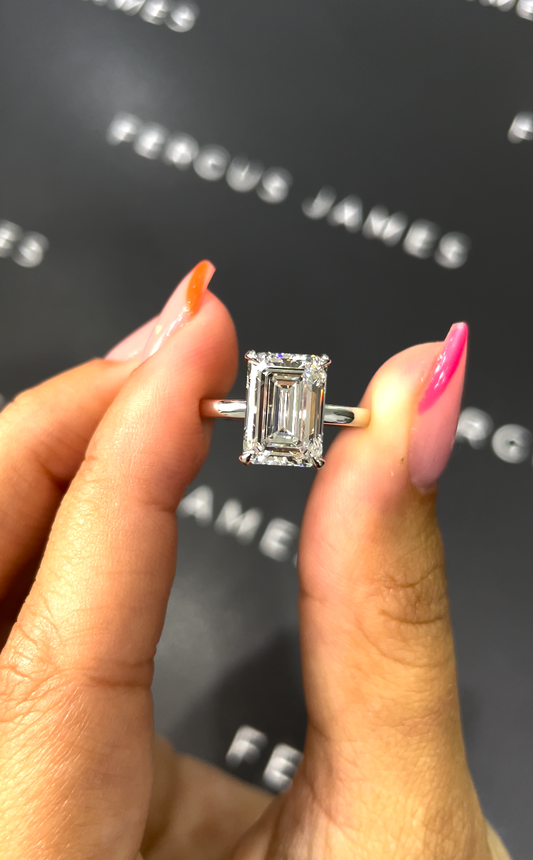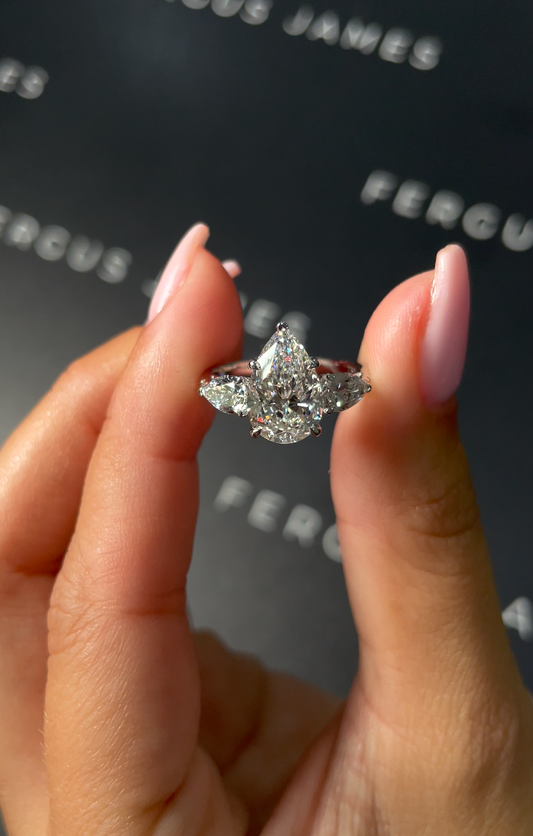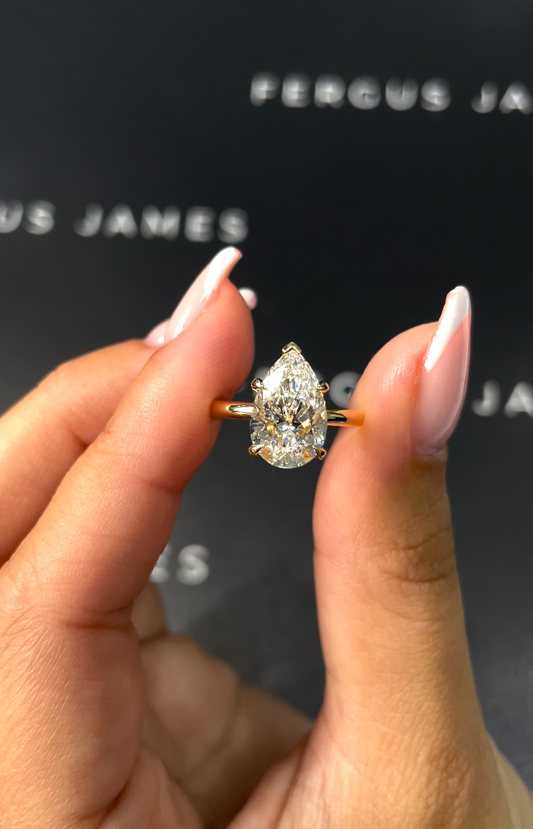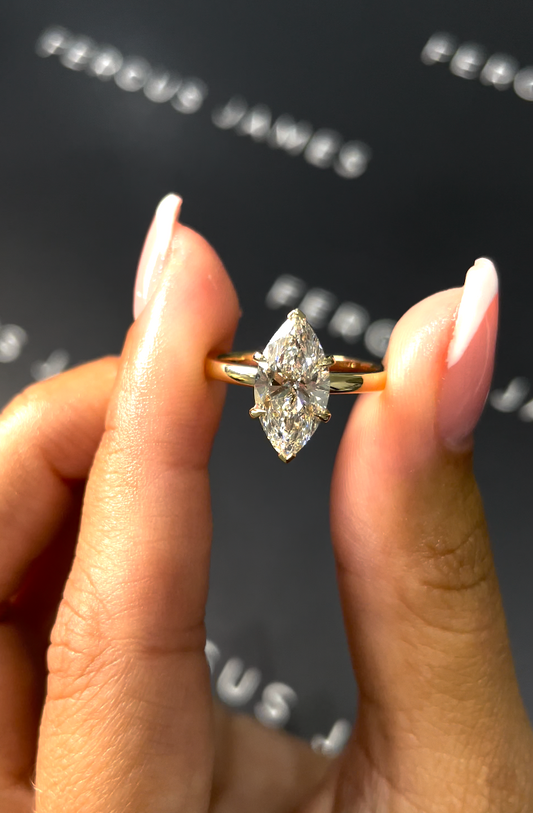Who Makes Lab Grown Diamonds? A Look Inside the World’s Leading Manufacturers
Lab grown diamonds have transformed the fine jewelry industry by offering a sustainable and ethical alternative to mined diamonds. Their chemical structure, sparkle, and durability are identical to natural diamonds, but they are created in controlled laboratory conditions using advanced technology.
Behind every lab grown diamond is a team of scientists, engineers, and craftsmen who work with precision to replicate nature’s process. Understanding who makes these diamonds and how they are produced can help you make better, more informed decisions when purchasing one.


How Lab Grown Diamonds Are Made
Before highlighting the top producers, it’s helpful to understand how lab grown diamonds are created.
There are two main methods: HPHT (High Pressure High Temperature) and CVD (Chemical Vapor Deposition).
HPHT replicates the natural formation of diamonds deep within the earth, using high heat and intense pressure to turn carbon into crystal.
CVD, on the other hand, involves placing a small diamond seed into a chamber filled with carbon-rich gas. When heated, the carbon attaches to the seed layer by layer, eventually forming a full diamond crystal.
Most modern manufacturers prefer the CVD method because it offers greater control over diamond size, quality, and purity. However, some still use HPHT for specific diamond types or to improve color and clarity.
Top Lab Grown Diamond Manufacturers Around the World
The following companies are recognized as leaders in lab grown diamond production, setting global standards for quality, innovation, and sustainability.
1. Diamond Foundry (USA)
Diamond Foundry, based in California, is one of the most prominent names in the lab grown diamond industry. Known for its eco-friendly approach, the company produces diamonds entirely powered by renewable energy.
The company uses advanced CVD technology to grow single-crystal diamonds that are virtually indistinguishable from mined ones. Diamond Foundry’s process produces zero carbon emissions, a major factor that appeals to environmentally conscious consumers.
They also supply diamonds to several luxury jewelry brands and independent designers. Their diamonds are often praised for their exceptional clarity and precision cutting, which enhances brilliance.
2. Pure Grown Diamonds (USA & India)
Pure Grown Diamonds operates research and production facilities in the United States and India. They were one of the first companies to scale lab grown diamond production for commercial use.
Their focus is on producing high-quality colorless diamonds and fancy colored diamonds in shades like pink, yellow, and blue. Pure Grown Diamonds uses both HPHT and CVD methods, selecting the best process depending on the diamond type.
What sets them apart is their consistent quality control. Every stone goes through rigorous testing by independent gemological laboratories to ensure that customers receive diamonds of certified authenticity.
3. Greenlab Diamonds (India)
Based in Surat, India — the heart of the global diamond cutting industry — Greenlab Diamonds has quickly risen as one of the largest lab grown diamond manufacturers in the world.
Greenlab combines modern technology with traditional craftsmanship. Their facilities produce thousands of carats of diamonds each month, covering a range of shapes, colors, and sizes.
The company is known for its dedication to ethical production and sustainability. They actively invest in renewable energy sources and aim to make diamond production carbon neutral.
Their diamonds are also popular among jewelers looking for consistent supply and precision-cut stones. Greenlab’s expertise in polishing and finishing ensures their diamonds meet international luxury standards.
4. WD Lab Grown Diamonds (USA)
WD Lab Grown Diamonds is one of the pioneers in the American lab grown diamond market. The company holds several patents related to CVD technology, which allows them to grow diamonds with unmatched control over purity and structural integrity.
Their laboratory-grown diamonds are Type IIa — the purest form of diamond, free from nitrogen impurities. This purity allows for better transparency and brilliance.
WD supplies diamonds to several well-known luxury jewelry houses, along with companies that use diamonds for high-tech industrial applications. Their focus on scientific innovation and transparency has earned them a strong reputation among gemologists and consumers alike.
5. ALTR Created Diamonds (USA & India)
ALTR Created Diamonds is part of the R.A. Riam Group, a family business with over 85 years of experience in the diamond trade. Headquartered in New York and with manufacturing facilities in India, ALTR is known for combining craftsmanship with technology.
They produce lab grown diamonds using the CVD method and specialize in larger carat stones suitable for engagement rings and luxury jewelry.
ALTR emphasizes full traceability — every diamond is tracked from creation to the final jewelry piece. This transparency builds consumer trust and makes them a preferred supplier for brands that value ethical sourcing.
6. Lusix (Israel)
Lusix is an Israeli company backed by significant investment from LVMH, the French luxury group that owns brands like Louis Vuitton and Bulgari.
Lusix produces premium CVD diamonds grown entirely using solar energy, positioning itself as one of the most sustainable producers in the world.
Their diamonds are known for exceptional optical purity and consistent color grading. With strong support from the luxury market, Lusix is expected to become a major supplier for high-end jewelry brands seeking ethical and sustainable diamond options.
7. De Beers’ Lightbox (UK & USA)
Lightbox, owned by De Beers Group, offers lab grown diamonds focused on fashion jewelry rather than traditional engagement rings.
While De Beers was historically associated with mined diamonds, its move into lab grown production shows how much the market has shifted.
Lightbox diamonds are grown using advanced CVD technology at their state-of-the-art facility in Oregon, USA. The company maintains transparent pricing — around $800 per carat — making luxury diamond jewelry more accessible.
This approach has broadened consumer interest and created new demand for everyday fine jewelry featuring lab grown stones.

What Sets Leading Manufacturers Apart
Top lab grown diamond producers succeed because they combine scientific precision with ethical and environmental responsibility. Their focus areas include:
• Sustainability: Many manufacturers, such as Diamond Foundry and Lusix, use renewable energy sources to power their growth chambers.
• Quality Control: Companies like WD Lab Grown and Pure Grown Diamonds rely on strict grading and certification processes.
• Innovation: Firms continue to refine growth methods to produce larger, cleaner, and more consistent stones.
• Transparency: Modern consumers value knowing where their diamonds come from. Leading manufacturers offer full traceability from lab to jewelry piece.
Why This Matters for Jewelry Buyers
Understanding who makes lab grown diamonds helps you identify which producers align with your values. Some companies focus on sustainability, others on affordability, and some on high-end craftsmanship.
When buying lab grown diamond jewelry, it’s helpful to ask:
• Is the diamond certified by an independent lab such as IGI or GIA?
• Does the manufacturer use renewable energy?
• What growth method was used — CVD or HPHT?
• Is the diamond traceable back to its producer?
These questions ensure you choose a diamond that reflects both your style and your principles.
The Future of Lab Grown Diamonds
As technology advances, lab grown diamonds are expected to become even more refined, with improved color grading and larger carat options available at lower costs.
Luxury brands are also increasingly incorporating lab grown stones into their collections, signaling a lasting shift in how diamonds are valued and perceived.
The combination of beauty, sustainability, and affordability ensures that lab grown diamonds are not just a trend — they represent a modern approach to fine jewelry.
Final Thoughts
The companies shaping the lab grown diamond industry today are redefining what it means to own a beautiful, ethical piece of jewelry. Whether it’s the renewable energy focus of Diamond Foundry, the innovation of WD Lab Grown, or the craftsmanship of ALTR, each manufacturer contributes to a more responsible and forward-thinking jewelry market.
Choosing a lab grown diamond from a trusted producer means investing in a gem that shines just as brightly as nature’s own — but with values that align perfectly with the future of luxury.





















